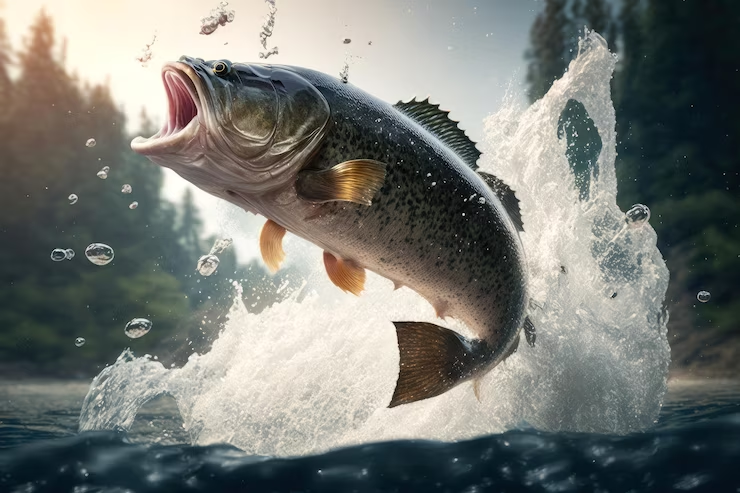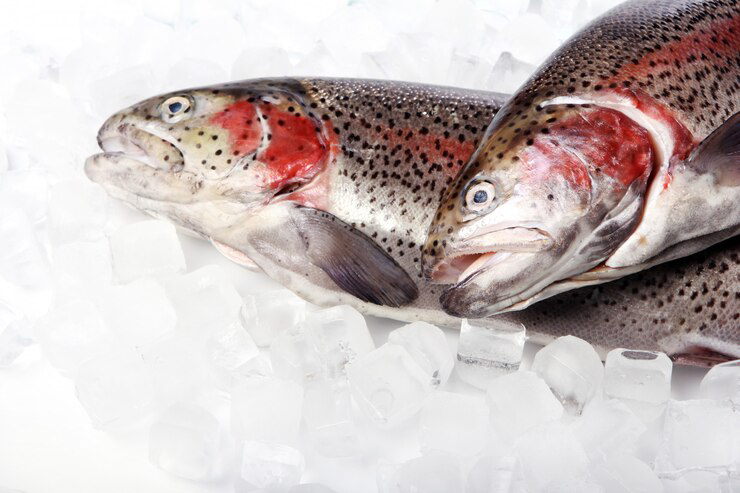Welcome to the intriguing realm of “Cold Cash: Economic Boons and Unintended Fortunes in Frozen Fisheries.” In the vast ocean of culinary exploration, few industries hold the same economic and gastronomic sway as frozen fish. Beyond the icy allure and the convenience of year-round availability lies a complex interplay of economic benefits that touch the shores of global markets, create employment surges, and ensure the stability of fishing communities.
In this article, we embark on a journey through the economic intricacies of the frozen fish industry, uncovering the hidden treasures and unforeseen advantages that make it a cornerstone of prosperity. From the preservation magic that extends market reach to the global trade opportunities unlocked by freezing fish, prepare to be immersed in the narrative of economic success that swirls beneath the surface of your favourite seafood dish. Join me as we explore the chilly waters where culinary delight meets economic marvel, revealing how frozen fisheries generate not just delectable meals but substantial economic dividends.
Preservation and Beyond Setting the Stage for Economic Fortunes
So, let’s start with the basics. Why do we freeze fish in the first place? Preservation, my friends! Picture this: the vastness of the ocean, teeming with delicious varieties of fish. The challenge lies in ensuring this bounty reaches your local market fresh and flavorfully. Freezing steps in as the unsung hero, preserving the quality and taste of fish while unlocking economic opportunities.
How does preservation equal economic gain? Well, think about it. When we can extend the shelf life of fish, it means we can make it available year-round. No longer bound by seasonality constraints, seafood lovers can enjoy their favourite dishes whenever possible. That, my friends, expands the market reach of seafood, leading to a chain reaction of economic benefits.

From Ocean to Table: Tracing the Economic Trail
Now, let’s follow the trail of frozen fish from the salty ocean breeze to your dining table. The process starts with skilled fishermen navigating the deep waters to haul in their catch. This initial step not only supports the livelihoods of these seafaring professionals but also sets the wheels in motion for a complex economic dance.
As the catch is brought ashore, a network of processors, distributors, and retailers gets to work. Each stage of this journey adds value and generates economic activity. Imagine the bustling fish markets, the cool hum of processing facilities, and the efficient logistics ensuring your frozen fillets make it to the local supermarket. It’s like a well-orchestrated symphony, with each note contributing to the economic melody.
Export Goldmine: How Freezing Unlocks Global Markets
Now, let’s talk about the international stage. Freezing fish isn’t just about satisfying local cravings; it’s about creating a global connection. Have you ever considered the impact of frozen fish on international trade and export opportunities? It’s mind-boggling!
Think about it this way: freezing fish allows us to ship our maritime treasures to far-off lands, creating a global marketplace for seafood. Countries with abundant fisheries can now share their maritime riches with nations that may not have access to the same variety. The result? Economic goldmines for both exporting and importing nations.
Let’s take a moment to appreciate the economic ballet happening on a global scale. As a seafood lover, your craving for a delicious fish curry might indirectly contribute to economic activities across borders, creating a web of interconnected prosperity.
Jobs on Ice: The Employment Boom in Frozen Fisheries
Now, let’s shift our focus to something close to my heart – job creation. The frozen fish industry isn’t just about preserving and selling seafood; it’s a powerhouse of employment opportunities. From the skilled hands of fishermen to the meticulous work of processors and the strategic planning of logistics experts, every stage of the frozen fish journey involves a workforce contributing to economic growth.
Consider the ripple effect of job creation in fishing communities. It’s not just the direct employment in catching and processing fish; it’s the small businesses that sprout up, catering to the needs of this bustling industry. From gear suppliers to local markets, the economic ecosystem surrounding frozen fisheries thrives on the jobs it creates.
So, the next time you savour a perfectly grilled frozen fish fillet, remember that you’re not just enjoying a meal – you’re contributing to the livelihoods of countless individuals who form the backbone of this flourishing industry.
Economic Stability in Chilly Waters: Supporting Fishing Communities
Now, let’s zoom in on the impact of frozen fisheries on the stability of local economies. Fishing communities, often dependent on the sea’s ebb and flow, face inherent challenges. Enter frozen fisheries – the unsung hero that brings economic stability to these often-vulnerable regions.
Imagine a small coastal town where the main source of income is fishing. Now, introduce frozen fisheries into the equation. Suddenly, the unpredictability of fishing seasons is mitigated. With the ability to freeze and store fish, these communities can maintain a steady income throughout the year. It’s like providing a financial safety net through frozen fillets.
This economic stability has a domino effect. Families can plan for the future, children can access education, and local businesses can thrive. It’s not just about economics; it’s about transforming lives and ensuring the sustainability of these picturesque coastal havens.
Environmental and Economic Harmony: The Unintended Symbiosis
Now, let’s touch on a point that might surprise you – the unexpected environmental benefits of frozen fish. You might be wondering how the environmental angle connects to economic prosperity. Well, my friends, it’s all about the delicate dance of sustainability.
Consider this: frozen fisheries often operate hand-in-hand with sustainable practices. The freezing process of fish encourages responsible fishing, ensuring we don’t deplete our oceans of their precious resources. Sustainable practices, in turn, safeguard the economic future of the industry.
It’s a beautiful symbiosis – by embracing eco-friendly approaches, frozen fisheries protect the environment and secure the industry’s economic longevity. It’s a win-win scenario where the health of our oceans and the prosperity of fishing communities go hand in hand.

Conclusion
In conclusion, freezing fish in the food industry isn’t just about making your favourite seafood dishes available year-round; it’s a complex symphony of economic benefits, job creation, and environmental sustainability. The next time you savour that perfectly cooked frozen fish, take a moment to appreciate the vast network of individuals and communities working tirelessly behind the scenes to bring it to your table.
From the economic dance on a global scale to the jobs created in fishing communities, the impact of frozen fisheries goes beyond the surface. It’s about fostering stability, creating opportunities, and ensuring a sustainable future for the industry and the environment.
So, here’s to frozen fish – not just a culinary delight but a driving force behind economic boons and unintended fortunes in the vast and fascinating world of the food industry. Cheers to the unsung heroes of the sea and the dedicated individuals who bring them to our plates, creating a symphony of economic prosperity that echoes from ocean to table.

